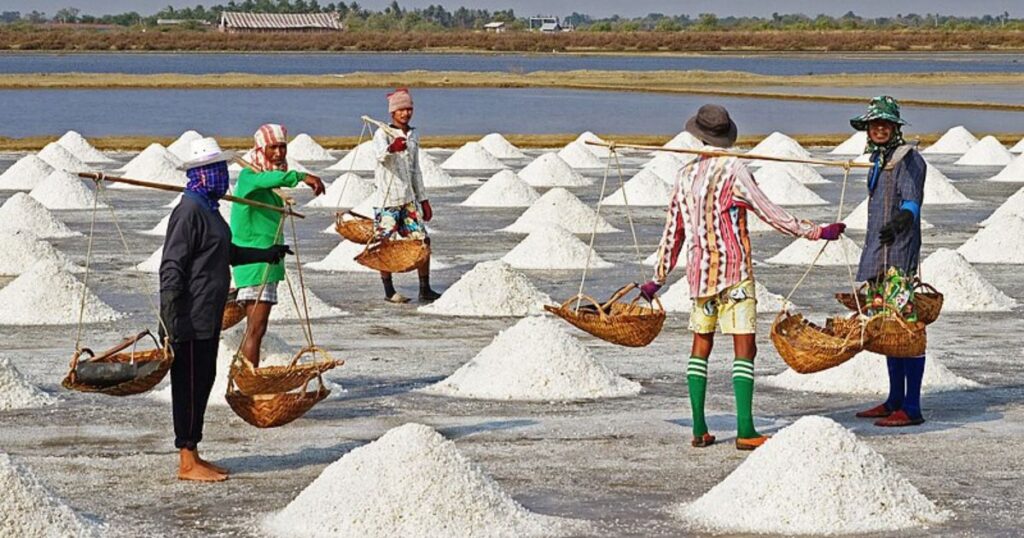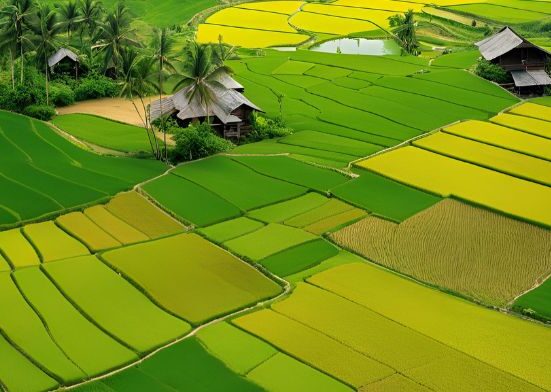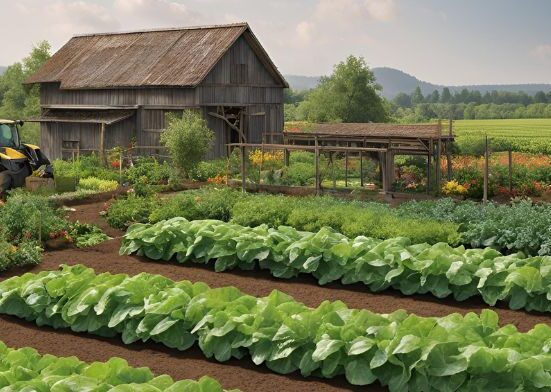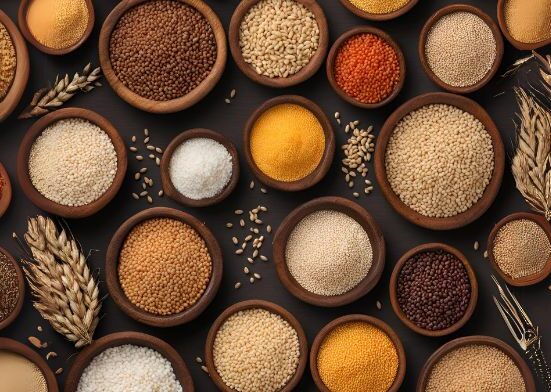The Agricultural industry is at a crossroads, facing unprecedented challenges with rising global temperatures, shifting weather patterns, and increasing water scarcity. In the face of these challenges, traditional farming methods that rely on freshwater sources are becoming unsustainable in many regions, particularly coastal areas. However, there is hope on the horizon. Scientists and agricultural innovators are pioneering a new frontier with saltwater farming, an innovative and promising solution.
Also known as saline agriculture, this method cultivates crops that thrive in saline conditions, utilizing saltwater and brackish water as primary irrigation sources. This approach could revolutionize coastal agriculture, enhance food security, and provide sustainable solutions for the growing global population.
Importance of Sustainable Agriculture in Coastal Regions
Sustainable agriculture in coastal regions is essential for preserving fragile ecosystems, ensuring food security, and mitigating climate change impacts. Coastal areas face unique challenges, such as soil salinity, erosion, and rising sea levels, threatening agricultural productivity. Sustainable practices like crop diversification, organic farming, and efficient water management help maintain soil health and reduce environmental degradation. Additionally, integrating aquaculture with agriculture can enhance resource efficiency and support local economies. By adopting eco-friendly farming techniques, coastal communities can build resilience against climate change, protect biodiversity, and ensure long-term agricultural sustainability for future generations while balancing economic and environmental needs.
The Need For Salt Water Farming

With freshwater resources dwindling due to climate change and overuse, salt water farming presents a sustainable solution for global food security. Traditional agriculture relies heavily on freshwater, but rising sea levels and soil salinization threaten crops. Salt water farming utilizes halophytic (salt-tolerant) plants like samphire and seawater-fed aquaculture to produce food without depleting freshwater supplies. These salt-tolerant crops ensure a steady food supply despite increasing water scarcity. This method can turn coastal and arid lands into productive farms, reducing strain on rivers and cash crops groundwater.
Additionally, it supports marine biodiversity and provides economic opportunities for coastal communities. As the global population grows, investing in salt water farming is crucial for a resilient food system. Innovations in desalination, genetic engineering, and ecosystem-based approaches can further enhance its viability, making it a key strategy for sustainable agriculture.
Freshwater Scarcity
Freshwater is a finite resource, and its availability is dwindling due to overuse, pollution, and climate change. Agriculture consumes about 70% of global freshwater supplies, making it the largest contributor to water depletion. Coastal communities, in particular, struggle with freshwater shortages due to saltwater wine intrusion, population growth, and increased demand.
Climate Change and Rising Sea Levels
As sea levels rise, saline intrusion into freshwater supplies is becoming a serious concern. Salinization increasingly affects traditional farmlands, rendering them unsuitable for conventional crops. Saltwater farming offers a proactive solution by leveraging saline-tolerant crops that can thrive in these changing What is Rapeseed conditions.
Food Security and Population Growth
The global population is projected to reach nearly 10 billion by 2050, placing significant pressure on food production systems. Expanding agricultural production into saline environments can help meet this demand while reducing reliance on diminishing freshwater resources.
Principles of Saltwater Farming
Saltwater farm vineyard stonington, or seawater agriculture, is a sustainable approach to cultivating crops and aquaculture in coastal and arid regions using saline water. It focuses on salt-tolerant plants (halophytes) such as Salicornia, which thrive in high-salinity environments. Key principles include soil and water management, desalination techniques, crop selection, and ecosystem integration to maintain biodiversity. Advanced irrigation methods, like seawater drip systems, optimize water use while preventing soil degradation. Combining aquaculture with agriculture (integrated multi-trophic systems) enhances sustainability by recycling nutrients. Saltwater farming is crucial in addressing food security, climate resilience, and land restoration, making it a viable solution for regions affected by rising sea levels and freshwater scarcity.
Crops and Plants Suitable for Saltwater Farming

Saltwater farming, or halophyte agriculture, involves cultivating crops that thrive in saline conditions, offering a sustainable solution for regions with high soil salinity or limited freshwater resources. Halophytes, such as Salicornia (sea asparagus), quinoa, and certain barley and rice varieties, are well-suited for such environments. Mangroves and seagrasses also play a crucial role in coastal ecosystems, stabilizing shorelines and providing habitat for marine life. Researchers are developing salt-tolerant crops through selective breeding and genetic modification to enhance agricultural productivity in saline soils. This innovative farming method can help combat food insecurity, mitigate climate change effects, and utilize seawater resources efficiently. Expanding saltwater farming can create more resilient food systems and sustainable agricultural practices worldwide.
Halophytes
Halophytes are plants that thrive in saline environments, such as coastal regions, salt marshes, and deserts with high salt concentrations. They have specialized adaptations, including salt-excreting glands, succulent leaves for water storage, and deep root systems to access fresh water. Examples include mangroves, saltbush, and glasswort. Halophytes play a crucial ecological role by stabilizing shorelines, preventing soil erosion, and providing habitats for wildlife. Some are also used in agriculture, biofuel production, and soil remediation due to their salt tolerance. With increasing climate change and soil salinization, halophytes offer promising sustainable food production and ecosystem restoration solutions.
Salt-Tolerant Traditional Crops
Certain staple crops have been selectively bred or genetically modified to tolerate higher salt levels, including:
- Salt-Tolerant Rice: Researchers have developed varieties that can grow in brackish water.
- Barley and Quinoa: Naturally more salt-tolerant than many other grains.
- Tomatoes and Potatoes: Some varieties show promise in saline conditions.
Marine Agriculture (Seaweed and Algae Farming)
Marine Agriculture (Seaweed and Algae Farming) cultivates seaweed and algae in oceans, coastal waters, and controlled aquatic environments. This sustainable practice provides food, biofuel, pharmaceuticals, and fertilizers while improving marine ecosystems by absorbing carbon dioxide and nitrogen. Seaweed farming requires minimal resources, making it an eco-friendly alternative to land-based agriculture. It supports coastal economies, promotes biodiversity, and enhances water quality. With increasing global demand for sustainable food and renewable resources, marine agriculture is gaining recognition as a crucial solution for climate change mitigation, ocean conservation, and food security. It plays a vital role in the blue economy.
Benefits of Saltwater Farming

Saltwater farming, or seawater agriculture, offers a sustainable solution to global food security by utilizing salt-tolerant crops and aquaculture. It reduces pressure on increasingly scarce freshwater resources and enables food production in arid and coastal regions where traditional farming is impractical. Halophytic plants like California thrive in saline environments and provide nutritious food, biofuel, and animal feed. Additionally, integrating aquaculture with saltwater farming enhances biodiversity and promotes a circular ecosystem by recycling nutrients. This method also combats land degradation and soil salinization caused by conventional irrigation. As climate change intensifies, saltwater farming presents an innovative way to cultivate crops in challenging environments while preserving freshwater for essential human saltwater farming benefits needs.
Water Conservation
By using saltwater or brackish water instead of freshwater, saltwater farming significantly reduces freshwater demand, making it a sustainable alternative for water-scarce regions. Saline agriculture can transform large areas of coastal and degraded land saltwater fish farming unsuitable for traditional agriculture into productive saltwater farming definition farmland.
Climate Resilience
Salt-tolerant crops can withstand extreme weather conditions, including droughts, storms, and flooding, making them a reliable food source in the face of climate change. Many halophytes help restore degraded coastal ecosystems by stabilizing soil, preventing erosion, and improving biodiversity.
Economic Opportunities
New agricultural markets, including seaweed-based industries and saltwater-fed livestock fodder, can create employment and economic growth in coastal saltwater shrimp farming regions.
Challenges and Considerations
Despite its potential, saltwater farming presents several challenges:
- High Initial Costs: Infrastructure, research, and development for saltwater irrigation systems and crop adaptation require significant investment.
- Salt Accumulation in Soil: Over time, excessive salt can degrade soil quality, necessitating careful management and innovative solutions such as soil amendments and biofilters.
- Market Demand and Consumer Acceptance: To become mainstream, new crops like salicornia and seaweed-based products need greater consumer awareness and market development.
- Government Policies and Support: Regulatory frameworks and financial incentives are necessary to encourage adoption and investment in saltwater farming initiatives.
Successful Saltwater Farming Projects Around the World
Saltwater farming is emerging as a sustainable solution to food security and climate change, with successful projects demonstrating its potential globally. Zilt Proefbedrijf develops salt-tolerant crops like sea kale and saline potatoes in the Netherlands. The UAE’s ICBA (International Center for Biosaline Agriculture) cultivates quinoa and Salicornia using brackish water. Scientists have pioneered salt-resistant rice in China, producing millions of tons annually.
Mexico’s Seawater Greenhouse project grows crops in arid regions using seawater-cooled greenhouses. Australia’s Seafarms Group runs large-scale shrimp farming using ocean water. These initiatives prove salt water farm can transform barren lands into productive agricultural zones, ensuring food production even in saline environments and providing hope for future global food security.
The Netherlands’ Salt Farm Texel
Salt Farm Texel is a leading research farm experimenting with salt-tolerant crops such as potatoes, carrots, and quinoa. Their work has demonstrated that many traditional crops can be cultivated in saline conditions with proper saltwater pearl farming management.
The UAE’s Quinoa and Salicornia Projects
The UAE’s Quinoa and Salicornia projects are part of the country’s innovative approach to sustainable agriculture in arid environments. These projects focus on cultivating quinoa, a drought-resistant superfood, and California, a salt-tolerant plant, in the desert. The UAE aims to reduce reliance on imported crops while conserving water and optimizing land use by utilizing advanced farming techniques such as hydroponics and vertical farming. These projects also align with the UAE’s broader goals of enhancing food security, promoting environmental sustainability, and diversifying agricultural practices to thrive in the region’s challenging climate.
China’s Saltwater Rice Research
China has developed salt-tolerant rice varieties that grow in brackish water, producing high yields and expanding rice cultivation into coastal regions. With rising sea levels affecting agriculture, Bangladesh has developed floating farms where crops are cultivated on floating beds made of aquatic plants, reducing the impact of saline water saltwater fish farming inland intrusion.
The Future of Saltwater Farming
 The future of saltwater farming holds immense potential for addressing global food security and environmental challenges. With the rising demand for sustainable practices, saltwater farming, which utilizes saline-rich environments to grow crops and aquaculture, is gaining attention. This innovative approach reduces the pressure on freshwater resources and opens up new agricultural possibilities in coastal and arid regions. By leveraging advanced technologies like aquaponics and salt-tolerant crops, saltwater farm could revolutionize how we produce food, enhance biodiversity, and mitigate climate change. As research and development progress, it promises to offer a resilient solution to the world’s growing population.
The future of saltwater farming holds immense potential for addressing global food security and environmental challenges. With the rising demand for sustainable practices, saltwater farming, which utilizes saline-rich environments to grow crops and aquaculture, is gaining attention. This innovative approach reduces the pressure on freshwater resources and opens up new agricultural possibilities in coastal and arid regions. By leveraging advanced technologies like aquaponics and salt-tolerant crops, saltwater farm could revolutionize how we produce food, enhance biodiversity, and mitigate climate change. As research and development progress, it promises to offer a resilient solution to the world’s growing population.
Key Areas for Future Research and Development:
Future research and development should focus on advancing technology, sustainability, and innovation across various industries. In healthcare, precision medicine and AI-driven diagnostics can revolutionize patient care. Renewable energy solutions, such as improved battery storage and solar efficiency, are crucial for a sustainable future. Research on climate-resilient crops and vertical farming can enhance food security in agriculture. The tech sector should explore AI ethics, quantum computing, and cybersecurity to address growing digital threats. Space exploration and biotechnology advancements, including genetic engineering and fabrication, present new frontiers for discovery.
Additionally, sustainable materials and circular economy models can reduce environmental impact. The social sciences should examine the effects of automation, mental health trends, and global policy shifts. Interdisciplinary research will be vital in addressing challenges such as climate change, resource scarcity, and emerging diseases. By prioritizing these areas, innovation can drive progress toward a smarter, healthier, and more sustainable world.
Conclusion:
Saltwater farming represents a transformative approach to global agriculture, offering a sustainable solution to freshwater scarcity, climate change, and food security challenges. By harnessing the potential of salt-tolerant crops, integrating aquaculture, and expanding research and investment, coastal agriculture can flourish in an era of environmental uncertainty. As we progress, adopting and scaling saltwater farming will be crucial in building our planet’s resilient and food-secure future.
FAQ:
What is Saltwater Farming?
Saltwater farming cultivates crops, fish, or other agricultural products using saline or brackish water instead of freshwater. It is instrumental in regions with limited freshwater resources or coastal areas affected by seawater intrusion.
What Types of Crops can be Grown using Saltwater Farming?
Certain salt-tolerant crops, known as halophytes, can thrive in saline conditions. Examples include quinoa, sea asparagus (Salicornia), saltbush, and some rice varieties. Researchers are also developing salt-tolerant versions of traditional crops.
How does Saltwater Farming Benefit the Environment?
Saltwater farming helps conserve freshwater, mitigates the effects of soil salinization, supports biodiversity, and can help combat desertification. It also provides an alternative method for food production in areas where traditional farming is not feasible.
Can Livestock be Raised Using Saltwater Farming Techniques?
Yes, some livestock species can be integrated into saltwater farming systems. For example, fish such as tilapia and shrimp can be farmed in brackish or saltwater environments, and certain plants grown in these systems can serve as livestock feed.
What are the Challenges of Saltwater Farming?
Challenges include finding suitable salt-tolerant crops, managing soil salinity levels, developing effective irrigation methods, and ensuring economic viability. Additionally, infrastructure and technology for large-scale saltwater farming are still being developed.







